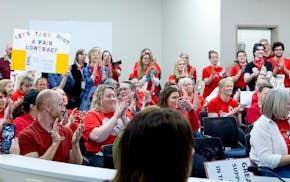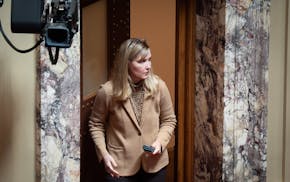Minnesotans eager to learn their COVID-19 status flocked to testing sites across the state in the days leading up to Christmas.
Nearly 60,000 state residents endured nasal swabs or spit into a tube on the Monday before the holiday and at least 13,000 took tests on Christmas Eve.
The testing labs reported 9,873 positive test results over the three-day period that included Friday, Saturday and Sunday, according to the Minnesota Department of Health.
Another 40 deaths were also reported to state health officials during that time.
Tuesday's numbers bring the total number of Minnesota cases to 1,010,225 and 10,399 fatalities.
The state's testing positivity rate is now at 8.6%, a slight uptick from 8.3% a few days earlier.
It remains to be seen whether or how much Minnesota's COVID-19 case numbers will trend upward as a result of the highly contagious omicron variant. New case rates have generally been falling since peaking in early December.
Along with lower case numbers, COVID-19 hospitalizations have ebbed somewhat, with 1,365 in the state's hospitals, including 334 in intensive care. The most recent high was 1,678 COVID-19 patients on Dec. 9.
Still, hospitals remain under pressure from high patient volumes related to other medical conditions and trauma cases. Adult ICU bed space is particularly tight, with no beds available at 52 of the 68 hospitals that have adult ICUs.
COVID-19 vaccine shots given out in Minnesota have declined for three consecutive weeks. Last week, 121,185 shots were administered. Although that number could increase as late reports trickle in from vaccinators, it is down from the 247,133 doses given out the week of Nov. 28.
Among those 5 and older, 67.3% of Minnesotans have been fully vaccinated. Nearly 1.7 million booster shots have been administered.
Gov. Tim Walz announced Tuesday the state will spend $2.5 million in federal America Rescue Plan funds to increase the availability of at-home rapid tests for COVID-19. To date, the state has distributed 1.1 million free rapid tests to state residents through schools, child-care providers and state-run community testing sites.

Lakeville teachers, district reach tentative contract agreement

Pulitzer Prize winner Hernan Diaz, Oscar-anointed Percival Everett and bestseller Rebecca Makkai coming to Hopkins for Pen Pals

Meet the affordable housing champion fighting for St. Paul's West Side
